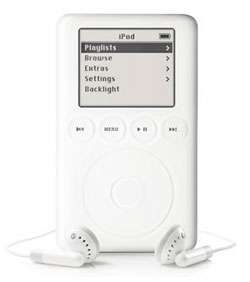Watch out iPod, Mobile TV is under way

Portable television may have just gotten a lot easier, now that the wireless industry is checking into mobile TV. A new alliance of wireless and technology companies are jumping on the bandwagon to do just that, including Intel, Motorola, Modeo, Nokia and Texas Instruments.
The Mobile DTV Alliance aims at promoting an open standard in North America for broadcast digital TV reception on mobile devices called Digital Video Broadcasting-Handheld (DVB-H).
Converging media is nothing new and the mobile phone is no exception. The mobile industry continues to look for ways to incorporate consumer electronics such as the camcorder, the still camera, audio player, with wireless, Bluetooth, WiFi, UWB technology all onto the cell phone.
And digital TV is the next step.
Mobile phones are expected to broadcast live TV along with 2.5G and 3G networks, capable of decoding DVB-H signals, according to the alliance. Thereby, allowing users to receive live TV programming from the mobile TV function on phones or other devices as well as on-demand and interactive programming.
This will in turn provide revenue opportunities for operators, according to the alliance.
Hubert Pan, a senior program manager for Broadcast Technologies with Motorola Mobile Devices business compares the technology to that of a cable set-top box -- but on a much smaller scale.
According to Pan, digital compression technology enables a half-hour show to be seen on a phone via digital television frequencies. But whereas consumers of cable have up to 400 or 500 channels, mobiles would only have access to seven to 20 channels.
Already, 10 DVB-H network trials have concluded or are currently underway in Australia, Finland, France, Germany, Italy, the United Kingdom, and the United States among other places.
And the alliance expects Mobile TV technology to hit major U.S. markets by 2007.
Despite evolving cellular technology and a third generation of handsets, the United States is still behind Japan and the rest of Asia, says Robert Frieden, Cable Pioneers chair and a professor at Pennsylvania State University.
He says consumers are watching near full-motion television video on their mobiles in Japan, a feature U.S. mobile businesses want to achieve.
"The cell phone is becoming a Swiss army knife with lots of add-ons," said Frieden, who explained phones are moving towards increasing bandwidth to handle multiple data streams of voice, photo, and video. "The industry expects consumers to not look at the cell phone as a phone but as television screens and Internet access vehicles."
However, he says the phenomenon still needs a lot of work among cellular companies, manufacturers and content makers who need to develop a standard among all involved in the industry especially in creating an efficient method to compress video and technology that could withstand playing the format.
Frieden says the alliance is on the right track, but notes even if the mobile phone adopts all these new applications, quality still remains a question.
Still, he believes mobile TV could be popular given the popular culture of entertaining portable technologies.
"If you give people that functionality, people are going to play with it if it's not expensive," Frieden said. "There's still two schools of thought on the issue, one school is bring it on and the other is I just want a phone."
But what does this mean for the television industry?
"There are two revolutions taking place," said Robert Thompson, a professor from Syracuse University. "One revolution is taking place in the living room with high definition, bigger and wider screens. The second revolution is portable television."
The director of the Center for the Study of Popular Television believes mobile TV will be extremely popular in U.S. markets.
"There will be a huge explosion where television is breaking out of the living room into portability," he said. "There is already so much appetite and demand to watch TV outside the living room."
Thompson believes the impact of mobile TV will not cut into the living-room experience as the affordability of quality DVDs and TVs become more convenient to consumers. Rather he believes a whole new media will be born that will in return create a new artistic entertainment form, resembling the module format of drive-time radio.
And like Frieden, Thompson expresses doubts that consumers will most likely not give up watching primetime shows like "24" or "Lost" on their televisions sets elude of their cell phones.
He says mobile TV will suffer from two elements, high definition audio and picture instead.
"No matter how good the show is, a 2-inch screen is still not same as big screen TV," Thompson said.
Copyright 2006 by United Press International
















